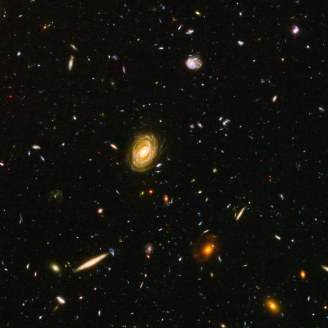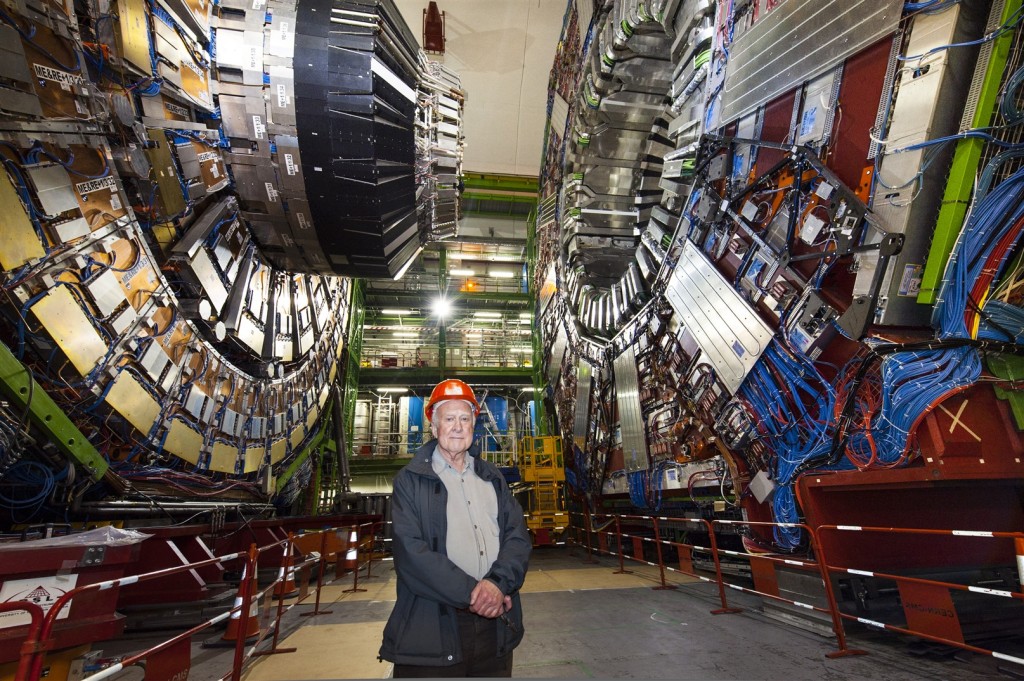
I received the following question on the Anisotropic Synchrony Convention (ASC) a timing convention. The ASC is a timing convention used in biblical creationist models of Jason Lisle and myself. It relies on the language of appearance, that the Author of the events in Creation week used such language in describing when events occurred. God said He made the stars on Day 4, so if any observer was on the earth then (which there wasn’t, of course) he would have seen the stars appear in the night sky of that day. Read the Related Reading below for a full explanation. The writer’s comments are in blue indented text and my response in grey text.
I have been ruminating and now I am ventilating. :^)
Intellectuals who study the heavens are the modern priests of the religion of Science. They speak to the world through esoteric formulas, computers, telescopes, satellites, space probes, deep solar system images, and advanced degrees that few humans can attain to but which are the credentials of entrance into a very elite religion. These modern priests step out of their ivory towers with scientific pronouncements based upon data that 99% of the population has no means of refuting, or even discussing. They are on the cutting edge of discovery and unbiased reality and matter-of-fact truth. Words from an ancient book, the youngest writings of which are nearly 2000 years old, coming from a time when transportation at its best was by foot or animal or wind, are impartially assessed as archaic, factually shallow, imaginatively intriguing, but, in veracity, vacuous. Miracles of authenticity in 2016 come from science, but the miracles of God are only found on the pages written in the progressively improbable antiquated past.
When the ASC timing convention declares that the light from distant galaxies started its real fact-carrying journey to earth billions of years ago, but was only seen on day 4, that perspective, from my non-scientist vantage point, actually does contradict Genesis. I commented to you as follows: “You are saying that, by the ASC timing convention, starlight was seen on day 4. (By the ESC timing convention, this would not be so?) Thus, the lights in the heavens are day 4 items in the creation story of earth, but they had to be made much earlier. However, all the light from above was seen the first time on day 4, but it had been traveling for a long time out there? I have the sense that I am not grasping what you are saying with the clarity that I should.” You responded, “I think you have it.”
Genesis 1:14 “Then God said, ‘Let there be lights in the expanse of the heavens to separate the day from the night, and let them be for signs and for seasons and for days and years; 15 and let them be for lights in the expanse of the heavens to give light on the earth’; and it was so. 16 God made the two great lights, the greater light to govern the day, and the lesser light to govern the night; He made the stars also. 17 God placed them in the expanse of the heavens to give light on the earth, 18 and to govern the day and the night, and to separate the light from the darkness; and God saw that it was good. 19 There was evening and there was morning, a fourth day.” (NAS Bible)
J.F.K (USA)
I will respond to specific points in email fashion below.
When the ASC timing convention declares that the light from distant galaxies started its real fact-carrying journey to earth billions of years ago, but was only seen on day 4, that perspective, from my non-scientist vantage point, actually does contradict Genesis.
It only contradicts Genesis chapter 1 account if you assume that the Einstein Synchrony Convention (ESC) (also a timing convention) is the absolute timing convention in the Universe. At the end of the passage Genesis 1:14-19, which you quoted, the Scripture says that those were the events of the 4th Day. Under either ESC or ASC that is true. But cosmological models need to be constructed to explain how that is so. And the models vary.
The models using the ESC usually rely on relativistic time dilation to get the light from the whole universe to arrive on Day 4. But models using the ASC may be also valid. Like the ESC models, the ASC models also have all the light arrive on Day 4 for the first time. So the events of creation that day, of the creation of the heavenly bodies, occurs on Day 4. There is no contradiction of Scripture there.
The only contradiction comes in your mind when you effectively say, “But the light must have been travelling for billions of years under the ESC convention, therefore the model has God creating them before Day 4, even before Day 1.” Yes, absolutely that is the case. But who says the ESC is the language used in Genesis? This is the key point.
I commented to you as follows: “You are saying that, by the ASC timing convention, starlight was seen on day 4. (By the ESC timing convention, this would not be so?)
Yes, under the ASC model light from the stars and galaxies is seen for the first time on Day 4, therefore we say they were all created on Day 4. That is the language of appearance. The moment they could be seen from Earth is the moment we time the event occurring. If a hypothetical observer were on Earth on Day 4 he would have said he saw the creation of the stars that day. But according to the ESC timing convention the light would also be seen for the first time on day 4. The only difference is that it had to travel for millions and billions of years under the ESC. Under the ASC it didn’t—there is no light travel time—it is instantaneous.
Thus, the lights in the heavens are day 4 items in the creation story of earth, but they had to be made much earlier.
Your statement is correct here, but incomplete. Under the ESC they had to be made much earlier, but under the ASC they were made that day.
However, all the light from above was seen the first time on day 4, but it had been traveling for a long time out there?
This question is ill-formed. Under the language of appearance, in the ASC model, the light travel time is zero from the stars to observer. But it is only a convention. This is the issue. It is that we are not able to measure the 1-way speed of light. So, yes, “…it had been travelling for a long time out there” under the ESC timing convention. Under the ASC timing convention it has no travel time at all.
I have the sense that I am not grasping what you are saying with the clarity that I should.” You responded, “I think you have it.”
I thought you did have it. But I believe the problem lays with your belief that the ESC timing convention is somehow absolute in the Universe, but actually there is no absolute timing convention; we are free to choose. The argument thought that Jason Lisle and I make is that the ASC is the language of the Bible. Prior to the last 400 years no one had any idea that the speed of light was finite. We have measured it now to be about 300,000 km/s (186,000 miles/s) but that is what we call the two-way speed of light, a universal constant. It probably should have been called Einstein’s constant.
In regards to what you say in your first paragraph, I agree it is frustrating. Possibly it is because of our culture and education. We want to have an absolute concept of space and time, but there isn’t one.
I feel that you and many others are reading too much into this. God said it. So it must be true. You can accept that, right? Well, for thousands of years no one questioned the 6 literal 24-hour days of Creation week and creation of stars on Day 4. Only after mankind became aware of the finite speed of light and the distances in the cosmos did he begin to doubt this aspect of Genesis. I am saying just read the Genesis account from the viewpoint that all events occurred on the days they could have been seen to occur. Forget about finite speed of light and massive distances. It is language of appearance, and then there is no starlight-travel-time problem.
Related Reading
- Anisotropic Synchrony Convention —A Solution to the Distant Starlight Problem
- Distant Starlight: The Anisotropic Synchrony Convention
- The Anisotropic Synchrony Convention model as a solution to the creationist starlight-travel-time problem – Part I
- The Anisotropic Synchrony Convention model as a solution to the creationist starlight-travel-time problem – Part II
- Jason Lisle defends his ASC model
- Synopsis: A biblical creationist cosmogony
- A question on ad hoc in my cosmologies
- The lecture: Starlight and Time—Is it a brick wall for biblical creation?
- Starlight and Time: Is it a brick wall for biblical creation?
- Aberration of starlight and the one-way speed of light
- Solutions to the biblical creationist starlight-travel-time problem
- How do we see distant galaxies in a 6000 year old universe?






5 responses to “A question on the Anisotropic Synchrony Convention”
Hello again Dr Hartnett! My lecturer has told me that the COBE satelite had confirmed predictions for the temperature fluctuations in the CMB made by inflation theory. He showed us a graph where the data matched the predictions of inflation. What do you think about this?
Kind regards!
LikeLike
It is hard to comment when it is not clear to me exactly what you mean. You will need to clearer. But in relation to the CMB radiation, it was a prediction of the big bang theory. Gamow in 1948 predicted it. But it is not sufficient evidence of the big bang. Otherwise that would be the logical fallacy of affirming the consequent. So that highlights any alleged prediction. Now more specifically you say a prediction of the cosmic inflation epoch? We saw the spectacular failure of that with BICEP2, which involved the B-mode polarization spectral data from a certain patch of sky in the CMB radiation. And then there was this claimed proof of inflation by Hugh Ross from the E-mode polarization data (and the scalar spectral index) from the South Pole Telescope. But no one but Ross made that claim. So I would be very skeptical and ask what was predicted before the COBE satellite produced any data and how that data was interpreted. Without specifics though there is little more I can say.
LikeLike
Hi John,
I just read your article on the ‘First Ever Gravitationally Lensed Supernova’ (I am asking here as I couldn’t comment on that article for some reason and this is the closest relevant recent article I could find) and agree fully that the ASC is not violated by the delayed onset of light, as the transverse components of the lensed light are travelling at c0. Your explanation was well communicated.
However, now that we have a finite travel time, would it still be possible for light to travel from that far out in the universe to Earth in a ~6000 year old universe? I guess it is dependent on the angle of deviation cause by the lensing but it seems that even a small angle might slow the beam down a bit too much. Or perhaps I have misinterpreted something.
God bless,
Marco
LikeLike
Marco, The comments on each article are open for 1 month and then closed. That is to attempt to keep the discussions focused on the most recent material though it might be worth extending that to 3 months.
The answer to you question is, yes of course it would be possible for light, even though deviating from the “direct line-of-sight” by the intervening mass, to travel to Earth from the distant cosmos in less than 6000 years. The delays in these gravitational lensing observations are a matter of a year or so. They could be much more—up to about 6000 years, the age of the universe—and still would fit into the ASC model. Read HUBBLE CAPTURES FIRST-EVER PREDICTED EXPLODING STAR.
LikeLike
Brilliant thanks John. Really enjoying your blog lately as well. A close friend of mine works in the group at UWA that helped discover gravitational waves (with Prof David Blair who you probably remember) so the school is buzzing at the moment. Hopefully I can use the discovery to segway into creation and then into the Gospel 🙂
LikeLike